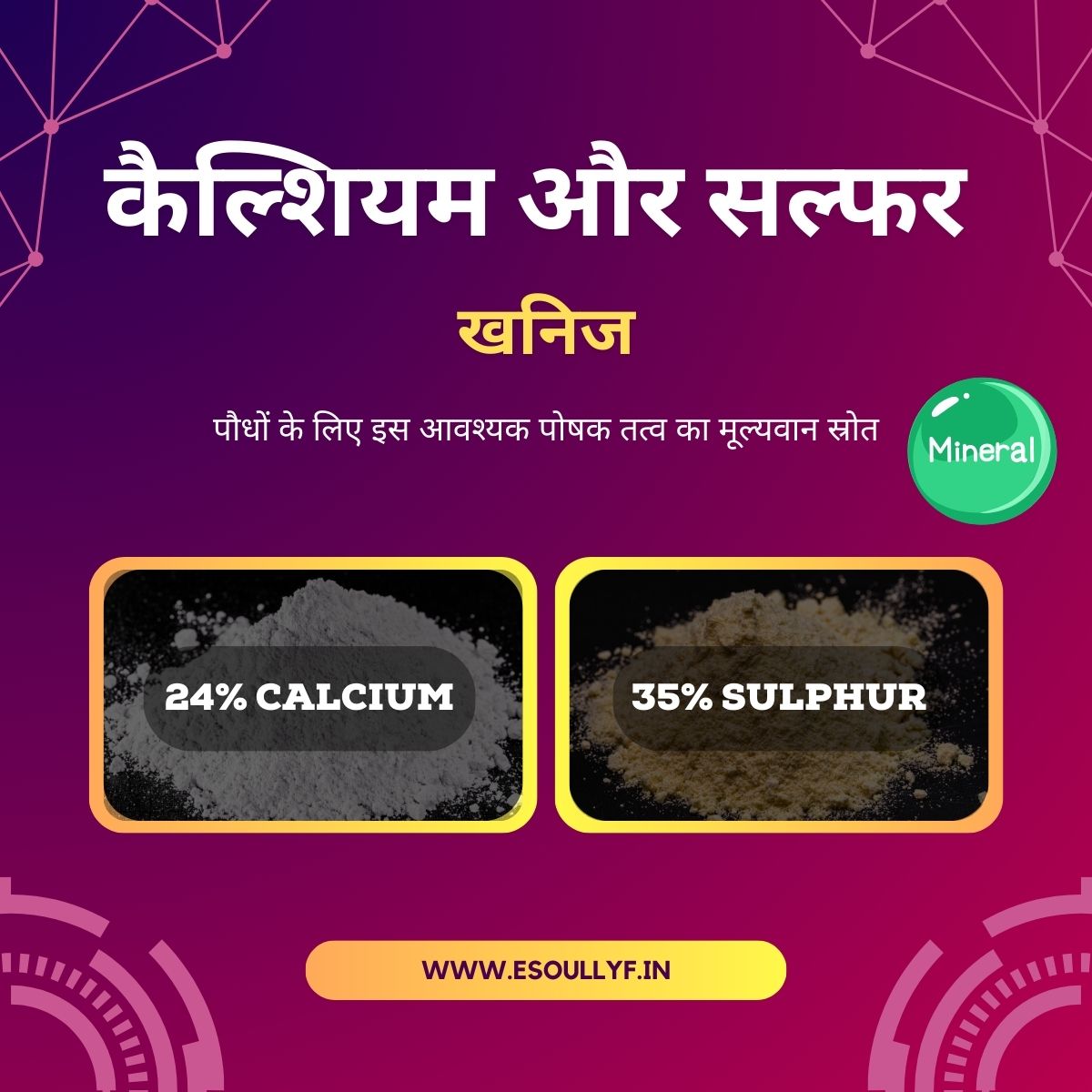Get expert advice, call on 8069456623
Calcium & Sulphur Mineral 24:35
Calcium & Sulphur Mineral 24:35
Couldn't load pickup availability
Calcium Sulphur Mineral | Khanij | White Soil 24:35 alters soil chemistry effectively. Soil particles and organic matter have negative charges on their surfaces, which attract mineral cations with positively charged surfaces. The number of exchangeable cations that a soil can hold and make available for exchange with the soil water solution is called the Cation Exchange Capacity (CEC). This indicates the level of nutrients the soil can hold. Clay soils tend to have a high CEC.
Calcium Sulphur Khanij dissolves with moisture into free calcium and sulfate. The sulfate (SO4) attaches primarily to excess magnesium (Mg), aluminum (Al), and sodium (Na) in the soil complex, forming soluble compounds that move down and out of the crop rooting environment. The remaining calcium from the Calcium Sulphur Khanij then attaches to the exchange sites, replacing the excess Mg, Al, Na, etc., in the soil complex. This sets the stage for improved soil structure.
Total Quantity: 300Kg
Influence of Calcium:
Calcium is a positively charged ion, known as a cation. Cations are absorbed by plant roots and are also held on exchange sites in soils. The positive charges of calcium are attracted to the negative electrical charges found on the exchange sites on clay particles and organic matter (OM). The more clay and OM present, the larger the attraction. This attraction of the positive calcium with negative charges in the clay particles binds the clay soil particles together, causing them to flocculate and resist dispersing, thereby preventing soil structure breakdown.
Cation Exchange Capacity (CEC):
Cation Exchange Capacity (CEC) is an indication of the volume of nutrients that can be held by the soil. One easy way to understand CEC is by imagining how large a container the soil is for holding nutrients. The more organic matter and clay in the soil, the greater the CEC and the more nutrients it can hold. Sandy soils typically have a lower nutrient-holding capacity and lower CEC. Trying to put ten gallons of nutrients into a five-gallon container means nutrients will go to waste.
Cations are elements with one or more positive charges. Clay and organic matter are covered in negative electrical charges called exchange sites. Cations are attracted to and held by these negative exchange sites. The amounts of different cations vary between soils. Generally, higher CEC soils require higher rates of Calcium Sulphur Khanij for effective soil amendment.
Composition:
Calcium: 24%
Sulphur: 35%
Benefits:
- Improved Soil Structure: Enhances the flocculation of clay particles, preventing soil dispersion and promoting better root development.
- Nutrient Balance: Replaces excess magnesium, aluminum, and sodium with beneficial calcium, optimizing nutrient availability.
- Enhanced Cation Exchange Capacity (CEC): Increases the soil's ability to hold and exchange essential nutrients, particularly in high-clay soils.
- Reduction of Toxic Elements: Sulfate ions help remove harmful elements like aluminum and sodium from the root zone, creating a healthier environment for plants.
- Increased Water Infiltration: Improves soil permeability and water infiltration, leading to better water management and reduced erosion.
Enhanced Root Penetration: Promotes deeper and more extensive root systems, improving plant stability and nutrient uptake.
#कैल्शियम और सल्फर खनिज
#કેલ્શિયમ અને સલ્ફર મિનરલ
#कॅल्शियम आणि सल्फर खनिज
#ক্যালসিয়াম এবং সালফার খনিজ
#కాల్షియం & సల్ఫర్ మినరల్
#ಕ್ಯಾಲ್ಸಿಯಂ ಮತ್ತು ಸಲ್ಫರ್ ಖನಿಜ
#കാൽസ്യം & സൾഫർ മിനറൽ
#கால்சியம் & சல்பர் மினரல்


